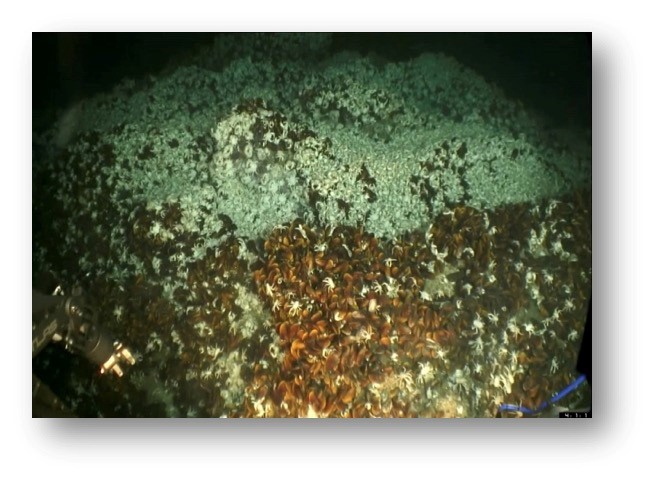Composition, environmental dependency and immune control of Gill symbionts of the cold-seep mussel Bathymodiolus platifrons
Mussels of the genus Bathymodiolus are one of the dominant species in two kinds of unique deep-sea habitats, cold seeps and hydrothermal vents, which are characterized by abundant reduced compounds (i.e., CH4, H2S). These mussels exhibit a very high biomass in the harsh deep sea environment, owning to their symbiosis with chemosynthetic bacteria which can provide energy. Methanotrophs and thiotrophs have been reported to be the most typical symbiotic bacteria in Bathymodiolus mussels.
The researchers in IOCAS collected mussels (B. platifrons) from a cold seep at a depth of 1100 m in the South China Sea and studied the gill symbionts inside, including the species composition, environmental dependency and immune control by the host.
By the optimized methods of fluorescence in situ hybridization (FISH) and quantitative real-time PCR, methanotrophs were found to be the major symbiotic bacteria in the gills of B. platifrons and were housed in bacteriocytes in a circular pattern. The unique circle-shaped FISH signal in B. platifrons has not been detected in other species of Bathymodiolus mussel. Thiotrophs were found to be scarce in the gills of B. platifrons. FISH results showed that thiotrophs presented on the surface of the ciliary tuft of the gill, implying that the detected thiotrophs are probably environmental bacteria in deep-sea water, not endosymbionts.
The researchers also found the symbiosis between B. platifrons and methanotrophs is influenced by the environment. After a 3-months rearing period in aquaria without methane supply, the abundance of methanotrophs decreased significantly and their circle-shaped distribution pattern disappeared.
A large number of symbionts are able to present inside B. Platifrons and be controlled without unregulated proliferation. Therefore, there must be a control or immunity mechanism in the host mussel responsible for maintaining the balance of endosymbionts, and the researchers found that the lysosomal system may be involved. The expressions of a lysosome-related gene (VAMP) encoding a vesicle-associated membrane protein were positive related to the abundance of methanotrophs in the gills of B. platifrons and presented exactly where the methanotrophs occurred.
The detailed results can be obtained in the research article entitled “Gill symbionts of the cold-seep mussel Bathymodiolus platifrons: Composition, environmental dependency and immune control”, which has been published in the journal of Fish & Shellfish Immunology. This study enriches the knowledge about symbionts in B. platifrons and provides a reliable method for investigating symbionts in deep sea mussels, by which the unique circular distribution pattern of methanotrophs in B. platifrons was displayed.

The dominant species in deep-sea habitats (Credit: Dr. Minxiao Wang)